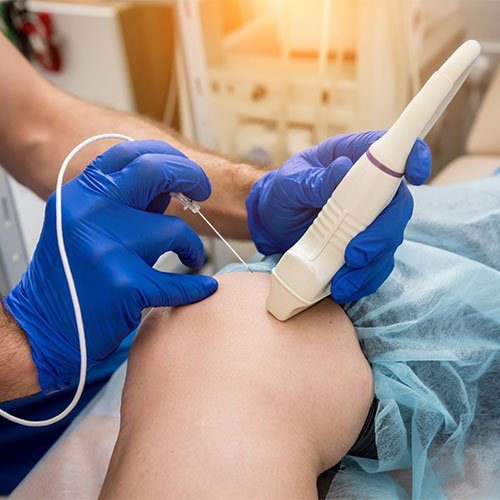
Varicose Vein (Laser & Rfa)
Varicose Vein (Laser & Rfa)
Varicose veins are enlarged, twisted veins that commonly appear in the legs and feet due to increased pressure on veins in these areas. They occur when the vein valves become weak or damaged, causing blood to pool and the veins to enlarge. Common symptoms include visible veins, aching or heavy feeling in the legs, itching, burning, and muscle cramps, particularly after standing or sitting for extended periods.
Following laser or RFA treatment, patients are advised to wear compression stockings for a short period to aid healing and reduce swelling. Many experience significant symptom relief and improved appearance of the legs. Both treatments boast high success rates and are preferred for their quick recovery, effectiveness, and minimal side effects compared to traditional surgical options.

Treatment Options for Varicose Veins
Treatments for varicose veins vary based on the severity of symptoms. Laser and Radiofrequency Ablation (RFA) are among the most effective minimally invasive techniques for treating varicose veins.
1. Laser Treatment
Laser treatment involves the use of focused laser energy to target the affected veins, causing them to heat up and collapse. Over time, the collapsed vein is reabsorbed by the body and fades away. There are two main types of laser treatments for varicose veins:
- Simple Laser Treatment: Typically used for smaller spider veins or early-stage varicose veins. The laser is applied externally to the skin, targeting veins close to the surface.
- Endovenous Laser Therapy (EVLT): This is used for larger varicose veins. A thin laser fiber is inserted into the vein, and laser energy is applied directly, causing the vein to close. EVLT is performed under local anesthesia and usually takes less than an hour.
Advantages of Laser Treatment:
- Minimally invasive with minimal scarring.
- Quick recovery time; most people can resume normal activities within a day.
- Highly effective with a low recurrence rate.
2. Radiofrequency Ablation (RFA)
Radiofrequency ablation is another minimally invasive technique that uses radiofrequency energy to heat and close off varicose veins. In this procedure, a thin catheter is inserted into the vein, and radiofrequency energy is applied, causing the vein to collapse and eventually be reabsorbed.
Advantages of RFA:
- Local anesthesia is sufficient, making it a comfortable option.
- Less post-procedure pain compared to traditional vein-stripping surgeries.
- Minimal downtime; patients can usually resume their daily routine in a short period.
Which Treatment Is Right for You?
Both laser and RFA treatments are highly effective for treating varicose veins. However, the choice of treatment depends on factors like the size and location of the veins, the patient’s health condition, and physician recommendation.
